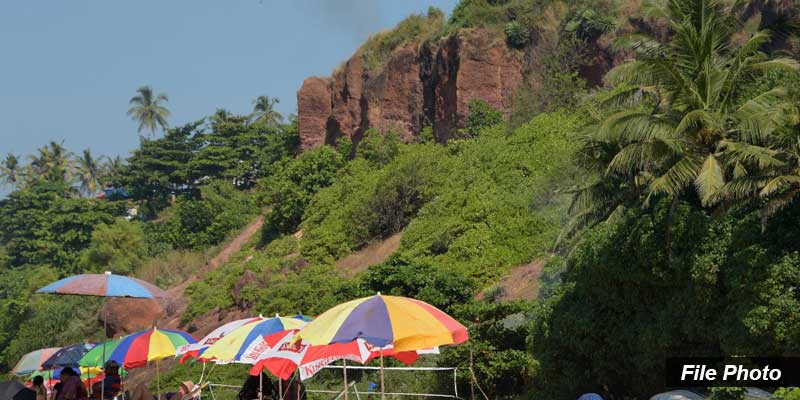- India
- Nov 30
- Kevin Savio Antony
NGT issues notice to GSI over declining condition of Kerala’s Varkala cliff
The National Green Tribunal has sought a reply from the Geological Survey of India (GSI) and others in a matter over the deteriorating conditions of Kerala’s Varkala cliff, a designated national geo-heritage site.
The NGT was hearing the issue after taking suo motu cognisance of a media report regarding the site facing threats due to environmental violations and administrative oversight.
Key facts about Varkala cliff:
• Varkala Cliff is a stunning natural formation located in Varkala, a coastal town in Thiruvananthapuram district of Kerala.
• It is famous for its high cliffs that overlook the Arabian Sea, offering breathtaking views and a serene atmosphere.
• Varkala is also known for its Papanasam Beach, which is believed to have religious significance.
• The stretch of cliff is lined with several restaurants, cafes, and accommodations, making it a popular spot for both tourists and locals.
• Additionally, the town is home to the Janardhana Swamy Temple, an ancient temple dedicated to Lord Vishnu, adding a spiritual dimension to the destination.
Unique features of the cliff:
• Size and Height: Stretching over 6 kilometers in length and rising to a height of 30 meters, the cliff offers dramatic views of the Arabian Sea, providing a spectacular coastal landscape.
• Ancient Formation: The cliff is believed to be 23 million years old, making it an ancient geological feature, adding a layer of historical significance to its beauty.
• Geological Composition: The cliff is primarily made up of laterite on the top, a type of reddish soil rich in iron and aluminum, while its base comprises softer layers of sandstone and clay, which influence the cliff’s appearance and erosion patterns over time.
• National Geological Monument: In recognition of its unique geological characteristics, Varkala Cliff was designated as the 27th National Geological Monument of India by the Geological Survey of India (GSI) in 2014.
(The author is a trainer for Civil Services aspirants.)

